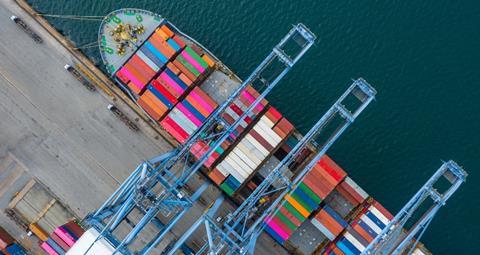Softening hull rates meet hard realities in war and claims inflation, according to a new marine insurance report from the broker.
Marine insurance markets have entered 2025 on a mixed footing. Gallagher Specialty’s latest “Hull & Machinery and War Risks Market Update” paints a picture of softening rates in the London hull market, growing claims pressure, and a war risks landscape that remains as volatile and fragile as ever.

The Q2 report highlights that while the frequency of serious casualties has decreased, the costs associated with smaller claims are on the rise. Meanwhile, geopolitical instability in the Middle East and Eastern Europe continues to drive high premiums and risk-aversion among underwriters.
London softens as claims heat up
“The start of 2025 has been characterised by a gradual softening of Hull and Machinery rates,” Gallagher reports. “This has been most acutely felt in the London market, where increased competition for the most desirable fleets has given buyers more choice and ultimately created a rating environment in their favour.”
However, the report cautions that the current phase, while beneficial for buyers, may not last. “Whilst technical rating is still, in many cases, insufficient, there is some discipline remaining in the market as underwriters try to retain profitability.”
Gallagher adds that this discipline is being tested by “multiple large participants [who] try to grow simultaneously, all targeting the same segments of the market.”
The result is downward pressure on rates that could, if left unchecked, erode long-term profitability. “Whilst this may give some short-term gain for buyers, it is not in the long-term interest of the shipping community for the market to fall back into a loss-making position.”
Claims costs creeping up despite fewer major casualties
While serious incidents have been rare in recent months, the collision between Solong and Stena Immaculate in March has served as a stark reminder of the latent risks in shipping. One crew member was lost and significant damage occurred, although catastrophe was narrowly avoided.
At the same time, smaller claims are becoming more expensive. “It is beyond doubt that improvements in technology, automation and overall standards of safety at sea have led to an improved overall loss experience,” Gallagher says. “However, it is also unquestionable that claims inflation is starting to bite, as predicted over the last few years.”
Routine machinery breakdowns now come with soaring costs. “The prices of steel, labour and yard space have all increased, directly impacting overall loss ratios.” Gallagher warns that “general rate reductions along with increased costs of claims can easily push the market back to a loss-making position in a very short space of time.”
Middle East and Black Sea still dominate war risks
The report devotes considerable attention to the war risks market, which Gallagher calls “unpredictable and fragile.” Following the collapse of the Gaza ceasefire, attacks by Houthi rebels are expected to resume. “The threat level for vessels transiting is deemed to be very high, and many owners continue to divert vessels around the Cape.”
Meanwhile, “additional premiums for Black Sea voyages remain the highest in the marine war market” due to continuing attacks and heightened sanctions on vessels and cargos, particularly involving Russian petroleum products. Gallagher emphasises that insurers will “refrain from adapting their cautious approach to Russian/Ukraine exposure until compelling evidence shows the risk has diminished.”
Shipowners and brokers are advised not to expect relief any time soon. “There is no certainty that vessels will enjoy safe passage through the Red Sea,” Gallagher warns. “Shipowners must remain vigilant and adopt all necessary safety measures if they choose to transit the area.”
Beyond state conflict, the report also flags a rise in piracy, with incidents in both the Gulf of Guinea and off Somalia. War risks underwriters now routinely require kidnap and ransom insurance, as well as onboard security measures, when quoting for vessels transiting these areas.
Sanctions enforcement is another major headache, particularly surrounding Russia’s “shadow fleet” of ageing, obscurely flagged tankers. “Such GPS jamming can create risks for innocent vessels in proximity,” the report notes. European authorities are increasing inspections, but Gallagher acknowledges that “it is impossible to identify all such vessels due to their data and satellite manipulations.”
The outlook: fragile, competitive, and uncertain
Looking ahead, Gallagher’s report sees reasons for both caution and preparedness.
From cost inflation to conflict and climate risk, the pressures on hull and war underwriters are mounting even as competition heats up.
The report closes with a measured warning for the industry as it moves deeper into the second quarter:
“Buyers are benefitting from increased choice and a gradual softening of rates, which is generally a healthy point of the market cycle. We will be closely watching whether this softening becomes sharper in the second half of 2025.”










No comments yet